Warren Bravo, Green Relief’s CEO and co-founder, explains how he has successfully pioneered the integrated production of tilapia and medical-grade cannabis – with the fish not only being donated to homeless shelters, but also helping reduce his production costs by 20 percent.
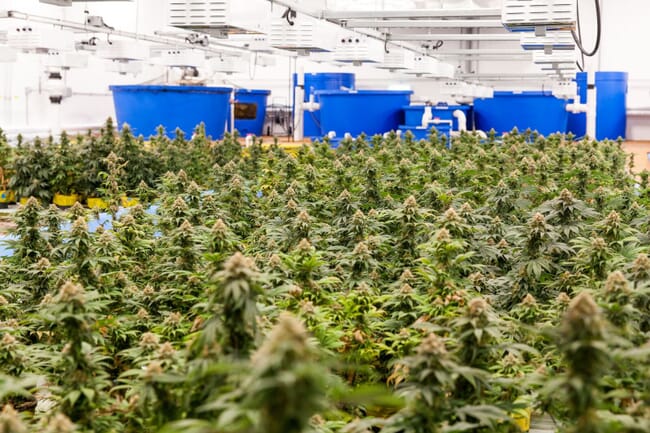
© Green Relief Inc
Why did you opt to use tilapia in the system?
There are two reasons tilapia are in the system. Number one: they’re a hardy fish, they’re a disease-resistant fish and they work well in an aquaponics or a farmed-fish environment.
Number two: you want to really match the root temperature of the plant you’re growing to the aquaculture that’s in the system. So cannabis, although it’s not an arid plant, likes a reasonably warm root temperature, and so it fits right in the sweet spot of tilapia, which like the water temperature range of 68°F to 82°F [20°C to 27.8°C].
If I was growing dark green vegetables with cooler temperatures, maybe I could get some brook trout and some other more saleable fish in there. In the long run there are lots of different fish I want to experiment with – including freshwater prawns and some bass species, barramundi and koi – which could give us the same net end result and are maybe more saleable. But if it ain’t broke, don’t fix it and tilapia work very well with the cannabis we’re growing currently.
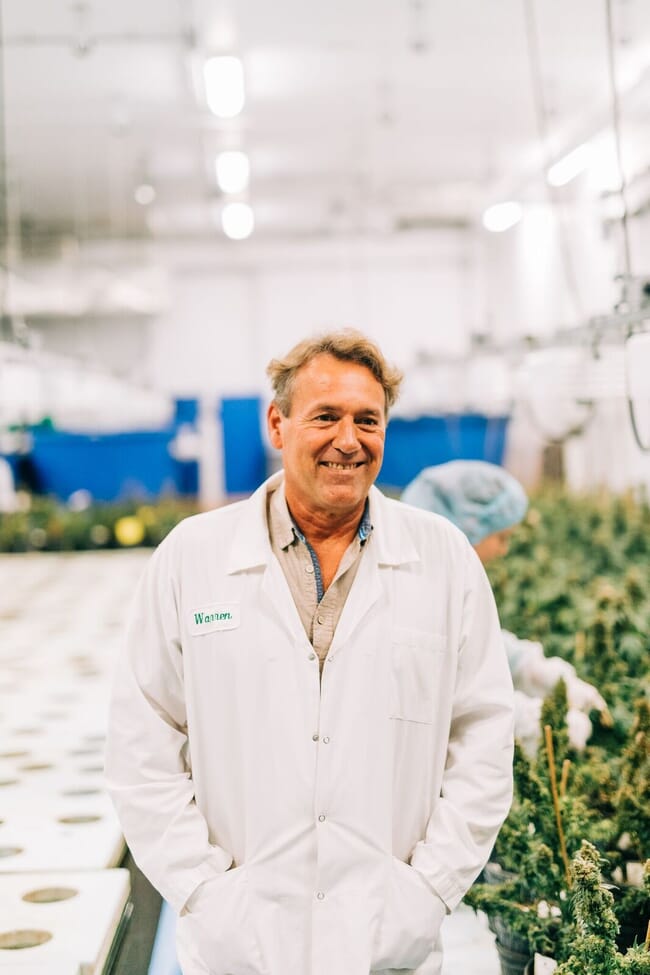
© Green relief
Can you estimate the benefits - in terms of productivity and savings on fertilisers - of using tilapia in the system?
Fertiliser costs in the hydroponic world are generally 20-30 percent. I don’t have any of those costs and am revenue neutral in that department because I get a tax receipt for all the fish I donate to homeless shelters. This totally offsets the cost of buying them, feeding them, paying the people who are feeding them, my water-testing costs and my veterinary costs, which makes me 20 percent cost of goods ahead of my competition.
The fact that I’m using LED lights as opposed to the 1000-watt high-pressure sodium metal halides that all my competitors are using, puts me 35 percent ahead on my hydro costs and electricity too. We’re very aggressive with our cost of goods sold and every day are trying to drive that down. When the dust settles we want to be one of the guys still standing.
How long will the project take before it starts to cover its own costs?
There’s a whole bunch of expenses coming up but our model is saying March of next year we’ll be profitable, just in revenue from our first building. In the long run, when we’ve opened all our buildings, the output will be approximately 60 tonnes of tilapia and 45 tonnes of cannabis per annum.
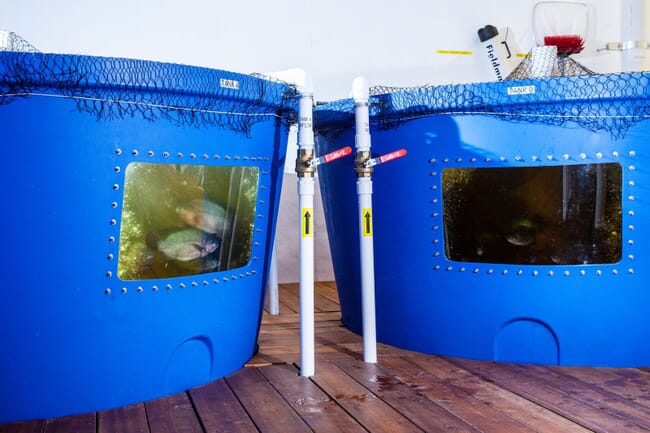
© Green Relief
How’s the project been received by the local community?
The stigma is still there: people have been told for their lifetime that cannabis is a gateway drug and that it’s a narcotic and all of the bad things – reefer madness, whatever. Education is key to us in informing people and now I have my mother using cannabis oil to help with some of her aches and pains. Unless this was a deregulated product, she’d never have considered using it for medicinal benefit in a million years.
But we’re getting more traction every day and in our immediate area we’re a very accepted part of the community. People see what we’re doing. We’ve had our regional councillors, our regional politicians, the mayor of the city of Hamilton, the city council, the planning and building departments. I have an open-door policy for city and politicians. We’ve had for our neighbours, have had hundreds and hundreds of people through our facility just so people know that we’re not underworld, illegal-sales kinda people – to show them that we’re not only growing cannabis in a very secure, controlled environment but are also leading-edge industry-wise, using aquaponics as our model. People are blown away. There’s not a tour that comes through that people aren’t. They’ll see the value of what we’re trying to get out there, we’re the only guys in the world doing it.
Would you consider using cannabis by-products in tilapia feeds?
I guess I would never say never and it’s on our radar to provide our own feed to our fish. My son is talking about raising black soldier fly larvae and other things for fish food but, unfortunately, I don’t have the time or energy and resources to invest in that side of it – maybe that’s one for the future.
In the meantime we’re working very closely with an organic fish-food manufacturer in British Columbia called Taplow Fish Feed and we’re very proud of being able to say that our fish are organic fish because we have no inputs in our system and we’ve developed our own intellectual property for feeding the fish.
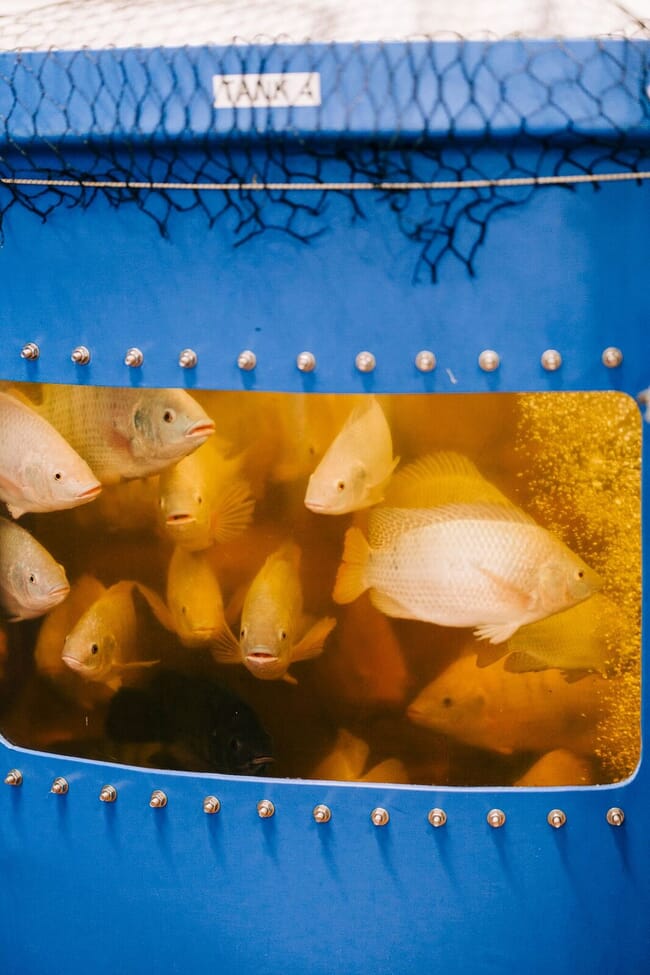
© Green Relief
Do you source your staff mainly from the aquacultural or the horticultural world?
It’s a blend of both. Because of the unique nature of growing aquaponically, we needed somebody who was savvy in fish and knew fish on an anatomic level, which is Melanie (our manager of aquaponics), who has a master’s degree in environmental science and did her thesis on aquaculture and on fish.
She’s the head of our five-person fish department – we don’t need that many people but we’re training for our satellite-growth model so we need to have experienced people who know this programme out in the world as we expand. However, you don’t really need a science background to work with the fish, as we have vets coming here doing analyses on our fish and making sure that our fish are pathogen free.
From the botanical side, I’ve got a PhD botanist and a very experienced girl out of the high-production greenhouse world.
Where do you source and distribute your tilapia?
We bring our tilapia in at half a gram from AmeriCulture in New Mexico and grow them to approximately 800 grams in eight months. So far all the tilapia we produce go to homeless shelters. Before we donate them we give them a five-day saltwater bath, purge them and don’t feed them to remove the brackish farm taste – that brackish water seems to give them a mushy fillet, but the salt bath keeps them calm and also firms up the fillet, so we’re actually producing a very high-quality organic fillet.
I don’t know how many homeless shelters or how many people are interested, but if I can donate all my fish I absolutely will, because I think it’s important for us to help – not just with the medicinal value of this plant but to help feed people as well. Protein is very hard to come by in the shelters and so they love having their fish Fridays. But if I saturate the market with donated fish and people can’t handle it any more, I’ll start wholesaling some to the grocery chains.

You have mentioned that research is a big part of the project – can you name any specific research projects you have planned, or already have underway?
Developing IP to grow cannabis aquaponically has been our main challenge. Nobody in the world – nobody globally – has gotten cannabis to grow as effectively and as quickly and high yielding as we have. There are people who grow cannabis aquaponically on a non-commercial, hobby scale, either involving their fish tank at home or small backyard systems with plastic totes and more home-use products you can put together, but we’re the first to do it on a commercial-scale.
Our grow rooms we have four growing rafts: two cycling immature plants, two cycling more mature plants. This is because when I harvest the two rafts of mature plants, I still have the root mass from the immature plants that are in the water. If I were to void that whole room of plants and take it out within 48 hours, I’d have nitrite spikes, ammonia spikes – my fish will stress and it’ll take them weeks to de-stress, so you want to maintain everything the same. So, finding that equal balance and maintaining it is huge and the protocol had to be developed over time – there are no books, there’s no YouTube videos, there’s no anything to show how to grow cannabis aquaponically on this scale.
Are you still fine-tuning the process?
We’ve partnered up with Youbin Zheng [an associate professor in environmental sciences at the University of Guelph] and I have a master’s student going in right now for his thesis through Youbin and we have three different light studies going on too. Investing in university research gives me great value because I can pitch in X number of dollars and they’re matching my funds with government grants and other things, while there’s a lot of information to be gained from their data inputs and resources that I benefit from.
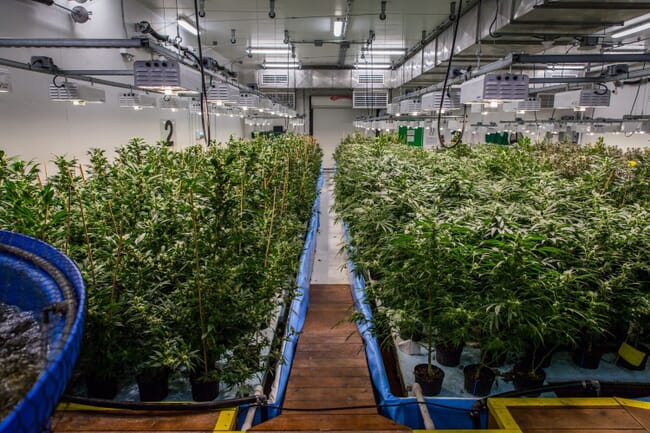
© Green Relief
Will the legalisation of cannabis in Canada [which took place on 18 October] affect you?
Legalisation is going to be an interesting milestone in the industry, though our focus is medicinal, so we don’t really have any plans to take advantage of the recreational space. I know everyone is jockeying for a position right now, but we’ve vertically integrated our product from our facility to the end user, so it doesn’t make a lot of sense for us to be a wholesaler when I know I can help people medicinally with what’s in these plants. On an anecdotal basis it provides value to people for health reasons and we’re excited just to stay in that space, and I think we’ll monetise in the pharmaceutical, nutraceutical industry more so than the recreational industry.



